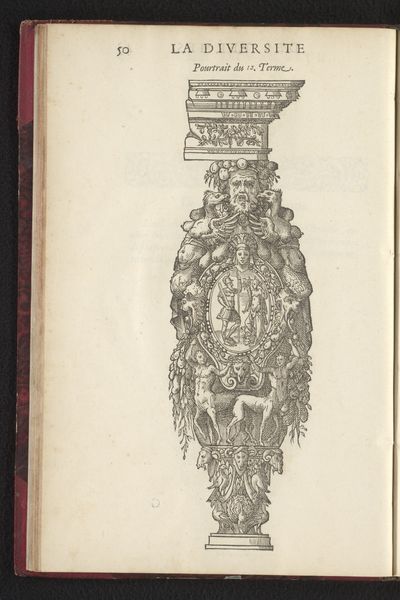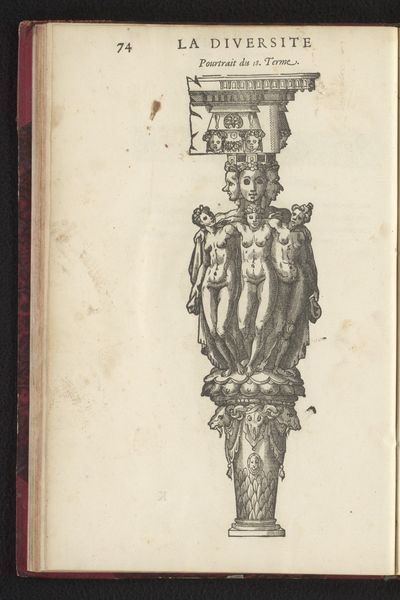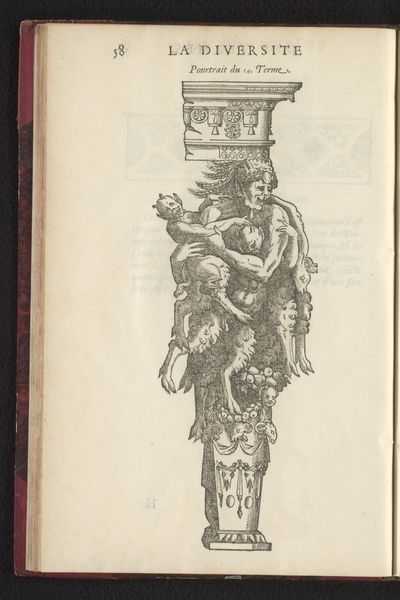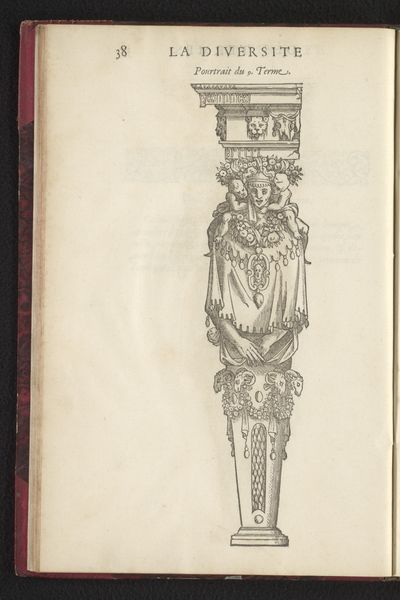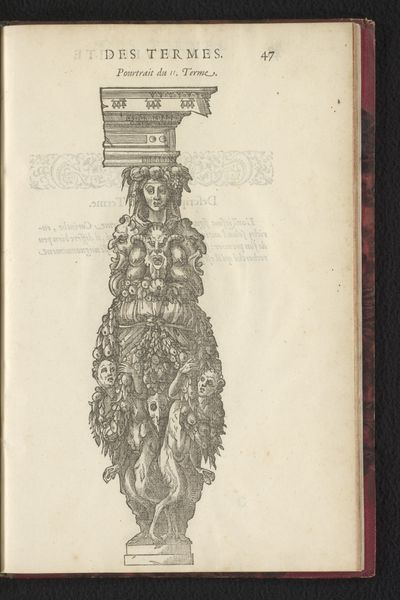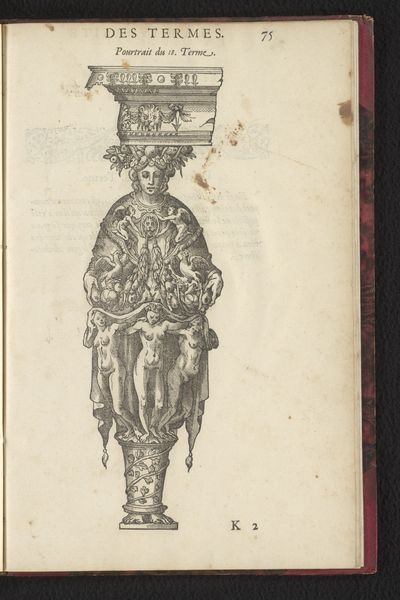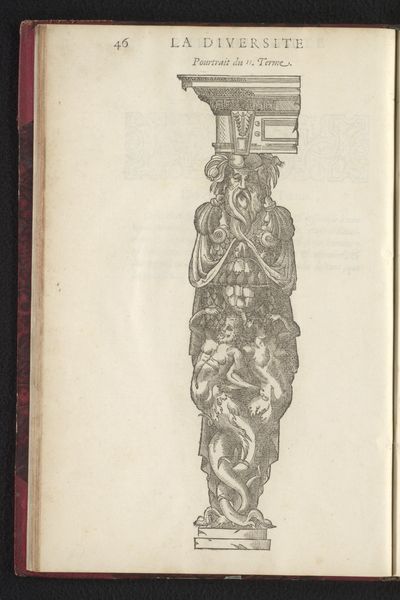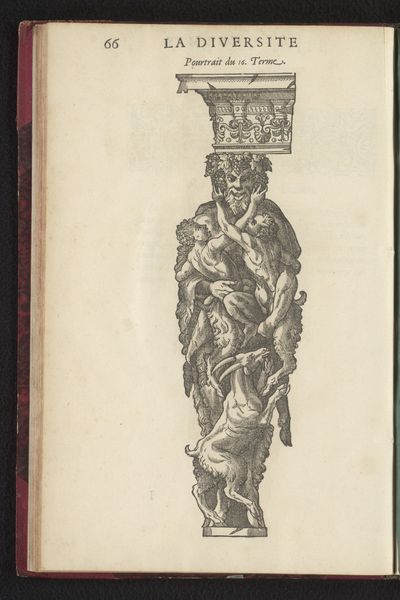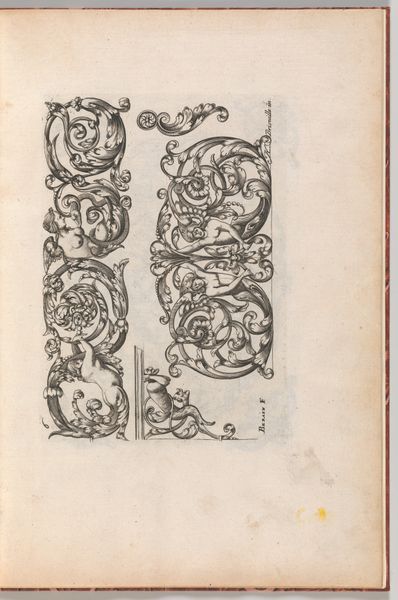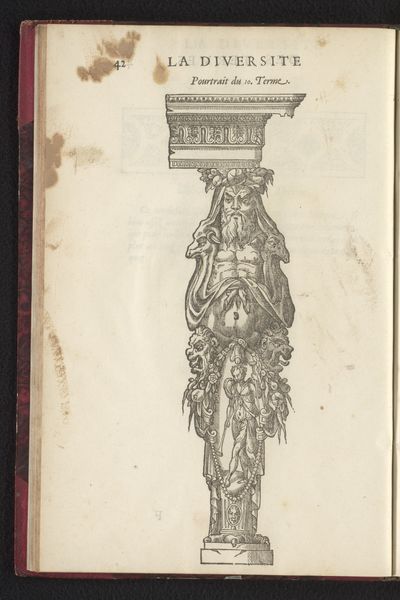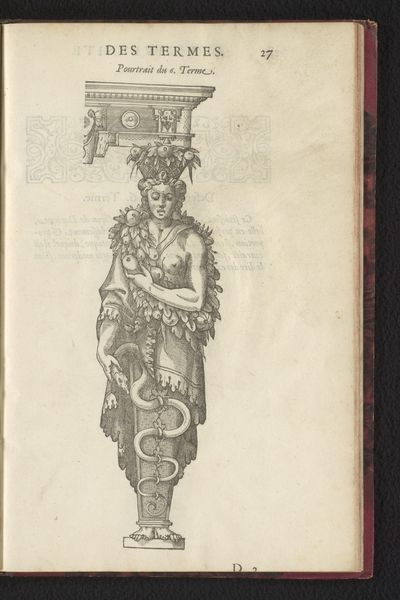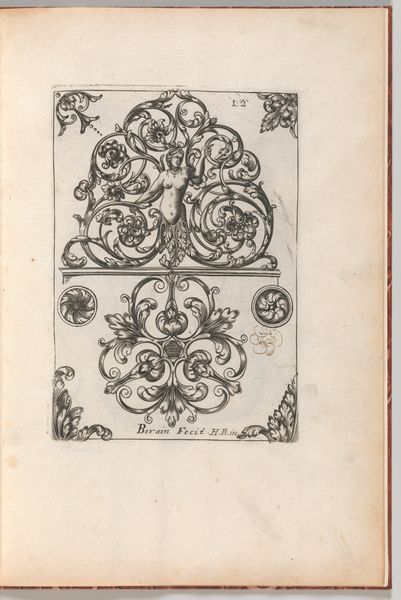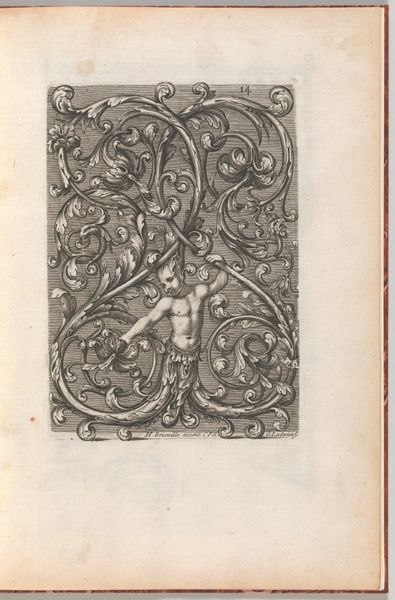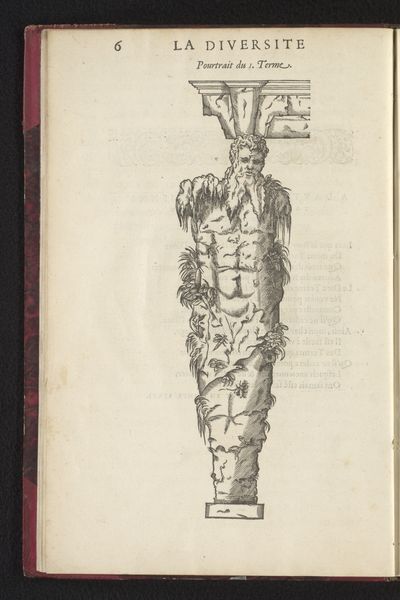
print, engraving
#
allegory
# print
#
mannerism
#
figuration
#
11_renaissance
#
engraving
Dimensions: height 308 mm, width 201 mm
Copyright: Rijks Museum: Open Domain
Curator: Looking at this Mannerist engraving from 1572, entitled "Term met twee kinderen in haar armen" and made by an anonymous artist, I am struck by the odd composition of forms, from human figures to what appear to be animal forms. Editor: Yes, there's something deeply unsettling in the layering, the superimposition of flesh and texture and symbolism, I imagine. What do you see in the material production that intrigues you here? Curator: Well, engravings during this period, especially those meant for wider circulation, were critical in disseminating visual ideas. This piece reflects not only a specific style—Mannerism—but it probably served as a reference for sculptors, artisans, or even other printmakers. The lines of production were intensely social, collaborative and exploitative. Editor: Collaboration or no, let's zoom in on form for a moment. Look at the way the bodies are contorted, limbs intertwined, all presented in this high-contrast, stark manner. Is there any suggestion as to which sculptural practice it references most obviously? Curator: Possibly some classical precedent from antiquity. However, I find it difficult to see the human figures here divorced from the probable patronage that motivated its production. An engraving of this detail surely catered to the elite classes eager for elaborate and, yes, unsettling imagery. They were not merely consumers; they were also shaping the possibilities of material culture and labor during a period of great political upheaval. Editor: It is quite an uneasy stack, and if we follow the logic of upward movement and examine the surface plane here we encounter several planes in pictorial space with tonal gradations adding volume that can otherwise feel chaotic and disorganized. The artist uses sharp linear elements but still creates a continuous upward movement—but towards what, really? Curator: Perhaps towards the consolidation of elite power manifested through artistic display? We shouldn't detach aesthetic experiences from the modes of material exploitation inherent to printmaking and distribution at that time. Consider what stories were being sidelined in favour of these elaborate visual forms; "Term met twee kinderen in haar armen" also functions to remind of socio-economic divides. Editor: I appreciate that the subject offers, through a kind of inverted formal elegance, an opportunity to think again about those societal realities, to find and recognize in aesthetic decisions reflections of the labor and its inequalities that you emphasize, not the "beauty". Well, I found this a most enlightening conversation! Curator: As did I; hopefully, we've shed new light on some less acknowledged angles concerning this historical engraving, to open dialogues on art and material exploitation, not simply in isolation from them.
Comments
No comments
Be the first to comment and join the conversation on the ultimate creative platform.
